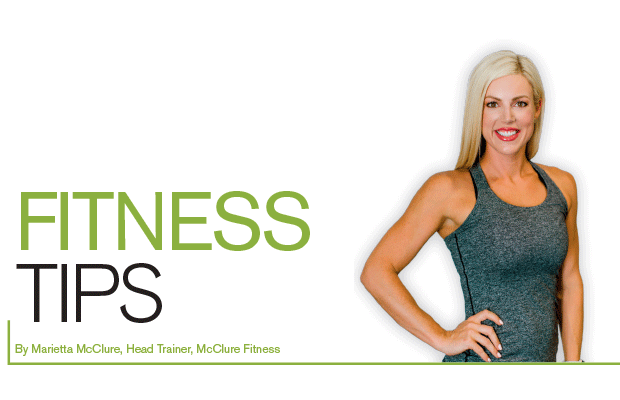Trust the Process

Most diet plans and exercise programs promise one thing—weight loss.
While we may use the term “weight loss,” is that actually what our goal should be? For some people, weight loss can benefit their health if they have a significant amount of weight to lose, while for others, weight loss could damage their health. And there are right and wrong ways to lose weight. How do we understand which is which? By understanding the difference between weight loss and fat loss.
What’s the Difference?
Weight loss, in and of itself, is simple. It is the number of calories burned minus your calorie intake. You may be wondering how something that seems so simple can be so difficult to do. It’s difficult because there are three main ways to lose weight, and it’s crucial that you choose the right one.
Muscle Loss
You may have heard the trope that “muscle weighs more than fat.” The truth is that a pound of muscle weighs the same as a pound of fat. But a pound of muscle is the size of a fist, while a pound of fat is the size of cotton candy at the fair. That means if you gain muscle and lose fat in the process, you’ll see results in your appearance, but you may not see much difference in your body weight. This scenario can look like fitting into a smaller size of jeans while the scale has barely moved.
Muscle loss is the last thing we want. It occurs when you focus too much on calorie restriction and cardio exercises and not enough on strength training. When you begin to lose muscle mass, this can harm your metabolism and insulin levels, ultimately resulting in muscle cells being replaced by fat cells.
Water Loss
Losing your “water weight” refers to when you lose weight by cutting carbs, because carbs retain three times as much water as any other macronutrient. This type of weight loss will give you fast results, but the results will be short-lived. This will also cause your muscles to adapt to dehydration and shrink!
Fat Loss
Fat loss refers to the loss of actual fat cells or fat lipids. Think about it this way: instead of making the pounds disappear, you’re shedding fat and making the fat disappear.
If you really want to see results in your appearance and do what’s best for your overall health, your focus should be on fat loss.
How To Lose Fat
So, now that you know to focus on fat loss, you may be wondering how to do so. The answer is diet and exercise. But not just one or the other. You consistently have to be eating the right things and doing the right kinds of workouts if you want to lose fat and see results in your appearance and overall health.
Diet
In the past, I’ve talked about the dangers of a ketogenic diet and why crash diets don’t work. If you want to achieve your fat loss goals, you’ve got to eat a healthy, balanced, calorie-restricted diet that will promote muscle growth, ultimately helping you lose body fat and keep it off!
And, as always, follow the 80/20 rule. Follow your diet plan 80% of the time, and don’t kick yourself if you let yourself cheat the other 20%. Tracking your calories on a free app like “My Fitness Pal” is a great way to make sure you are staying under 2,000 calories and over 1,500 calories every day.
Exercise
Cardio is great for your heart health, but don’t believe the myth that it’s all you have to do to burn fat. The truth is, you need to focus on building muscle tissue with strength training if you want to see results.
I recommend five HIIT (high intensity interval training) workouts per week until you meet your goal. Then, you can add back some low-impact workouts while continuing to do two or three HIIT workouts weekly. And don’t forget that if you want to keep up your progress, you’ll have to make exercise a long-term habit. Accept that exercise is a part of most days, find a routine, and stick to it!
How To Track Your Fat Loss
Only paying attention to the number on your scale and worrying about those day-to-day weight fluctuations isn’t going to help you make progress. While it can be tricky to track weight loss, there are a few things that you can try.
Record Weight Over Time vs. Focusing on Daily Weight
Your weight is going to fluctuate daily. Focusing on this day-to-day weight loss and weight gain will only discourage you. So, if you’re going to weigh every day, record your weight so you can track fat loss over time. I encourage my clients to only weigh once a week at the same time, like every Sunday morning. This way you’re not obsessing over the scale. Two pounds a week is a healthy weight loss goal. The less weight you have to lose, the smaller that benchmark number can be. If you have only ten pounds to lose, then half a pound a week is a healthy goal.
Pay Attention to How Your Clothes Fit
After exercising and dieting for a while, you may notice your clothes getting looser. Being able to get those skinny jeans on without jumping all around your room is a serious win, even if your scale weight doesn’t look much different.
Take Body Measurements
One of the best ways to track your progress over time is to take body measurements. Use a tape measure to track your bust, chest, waist, hips, thighs, and upper arm. I recommend you do this every other week or once a month to see if you’re losing inches.
Trust The Process
Don’t let this information overwhelm you. If you have fat to lose, simply exercise today and count your calories. Try not to think about the staircase in front of you and instead focus on the one step you’re taking that day. If you will be consistent, you will see results; you got this.
Do hard things often and intentionally. Let this philosophy permeate all areas of your life.









0 comments